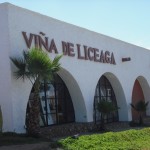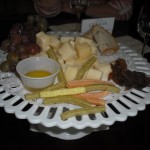DEALING WITH LOST LUGGAGE WHEN FLYING
If your luggage doesn’t surface when arriving at your final airport destination, go directly to the airline’s office to fill out a lost luggage form. Make sure you obtain a phone number to call for follow up and a tracking number. Having ID on your luggage is a bare minimum, but also some type of unique identifier such as a colored tag or strap will help find it more easily. Be able to give a complete description of your bag and where they can deliver it when found. – better yet, have a photo on your phone!
Ask what compensation is available for replacing lost clothing and toiletries. If your bag is never found (fortunately, a small percentage), make sure you keep receipts to submit for allowable reimbursements through your travel insurance or the airline carrier. Your rights are described under this governmental website, Department of Transportation.
AMAZING SMARTPHONE PHOTO APPS
If you are like me, you love to take lots of photos while traveling but don’t like the hassle of carrying a lot of photographic equipment. Smartphones and iPads have developed their camera capabilities immensely and there are now a number of applications available that can be downloaded to enhance your photographs even more. Best yet, some applications are free or are available for a small fee.
This recent article in USA Today is a great recap, http://www.usatoday.com/story/travel/advice/2013/04/04/variety-of-apps-let-you-take-vacation-shots-like-a-pro/2050087/.
CONSIDER PURCHASING EUROS NOW FOR SUMMER TRAVEL
After reaching a high of nearly 1.37 conversion in early February, the Euro has continued to decline in value compared to the US dollar. It is currently about 1.30 and historically begins to rise again before summer travel. If you are planning a trip to Europe this spring or summer, you may want to consider purchasing your Euros now.
SUITCASE SECURITY
- Pack valuable items in your carry-on luggage. If you must check it, take a photo of the contents, make an itemized list and copy your sales receipts, if possible.
- Expensive bags are more attractive to thieves so you may want to avoid checking your favorite leather luggage and instead, opt for lesser expensive mainstream luggage.
- Remove all prior tags and stickers from your luggage before traveling (except your ID tag) so information from a prior trip doesn’t confuse the baggage handler.
- Consider placing a copy of your itinerary and contact information for your first destination inside your bag where it can be easily seen.
- Lock your bag with a TSA-approved lock, but keep in mind that this is only a deterrent – they can be removed fairly easily
TIME TO “EAT CROW” / FLIGHTS FOR A CRUISE
For those of you I have advised to fly in the day before your cruise and those who are contemplating a cruise, a recent trip to Costa Rica reminded me that I need to “practice what I preach.” To save time, I thought I would take an early morning flight through Houston to Costa Rica for my ship departing at 10:00 pm. Little did I suspect that a severe storm would roll into Texas in December canceling all flights in and out of Houston for several hours, resulting in a late arrival into Costa Rica – too late to catch my ship. An effort to save a little travel time, resulted in spending the next two days catching up with my ship in Nicaragua – at my own expense, of course. I’ll make sure and listen to my own advice next time!
MINIMIZING JET LAG
- Set your watch to the time at your destination when you leave
- Stay well hydrated with water and avoid alcohol and caffeine
- Exercise in your seat (ankle circles, knee lifts, etc.) and walk the aisles when possible
- Wear an eye shield and use noise canceling earplugs when you need to sleep
- Eat light and healthy meals during flight
CARIBBEAN CRUISE SEASON
Enjoying the Costa Brava of Spain in the Off Season
 Despite warm rains, visiting the Costa Brava north of Barcelona is delightful in October. Streets are quiet and it is easy to drive the narrow, windy roads along this enchanting coastline. Although some shops close for the winter or have limited hours during this time of year, there are still plenty of fun boutiques, cafes, bakeries and delicious seafood restaurants from which to choose.
Despite warm rains, visiting the Costa Brava north of Barcelona is delightful in October. Streets are quiet and it is easy to drive the narrow, windy roads along this enchanting coastline. Although some shops close for the winter or have limited hours during this time of year, there are still plenty of fun boutiques, cafes, bakeries and delicious seafood restaurants from which to choose.
Based in LLanca for this too short of visit for three days, I enjoyed endless walks on the coastal trail which runs largely uninterrupted all the way to Barcelona along this beautiful rocky coast from this small village near the French border. The hills leading down to the Mediterranean Sea are dotted with vineyards and olive orchards, providing a plethora of wine-tasting opportunities. Recommended day trips in this area include a visit to nearby Figueres for great shopping and a tour of the Dali Museum. I discovered a popular restaurant along the way, Restaurant el Jou Vell, serving a bountiful and delicious buffet lunch – so good that many French drive across the border just to have lunch!
 Don’t miss a scenic drive to the Sant Pere de Rodes Monastery (or by healthy hike to up the mountain above El Port de la Selva if weather, time and comfortable shoes permit). This former Benedictine monastery has been lovingly restored and is quite extensive. You can even lunch there while enjoying envious views of the Mediterranean Sea on a clear day. My visit found the abbey shrouded in fog, however, which added mystery to this medieval treasure. The Sant Salvador de Verdera, a ruined castle perched above the monastery built for its protection. is a short hike above the monastery. I decided to skip it this time due to the muddy trail and fog, but understand views of the Mediterranean and coastline are even more spectacular from this lofty pinnacle. There is a well-maintained paved road to the monastery with parking nearby.
Don’t miss a scenic drive to the Sant Pere de Rodes Monastery (or by healthy hike to up the mountain above El Port de la Selva if weather, time and comfortable shoes permit). This former Benedictine monastery has been lovingly restored and is quite extensive. You can even lunch there while enjoying envious views of the Mediterranean Sea on a clear day. My visit found the abbey shrouded in fog, however, which added mystery to this medieval treasure. The Sant Salvador de Verdera, a ruined castle perched above the monastery built for its protection. is a short hike above the monastery. I decided to skip it this time due to the muddy trail and fog, but understand views of the Mediterranean and coastline are even more spectacular from this lofty pinnacle. There is a well-maintained paved road to the monastery with parking nearby.
 The charming and artsy seaside village of Cadaques is a must-see at the bottom of the mountain. Make sure you include a windy drive to nearby Cap de Creus, a rocky peninsula jutting out into the sea with a lighthouse and restaurant at its farthest point. This would be a perfect place for hiking, swimming at a private beach and a leisurely picnic when the weather allows.
The charming and artsy seaside village of Cadaques is a must-see at the bottom of the mountain. Make sure you include a windy drive to nearby Cap de Creus, a rocky peninsula jutting out into the sea with a lighthouse and restaurant at its farthest point. This would be a perfect place for hiking, swimming at a private beach and a leisurely picnic when the weather allows.
 Train service is good to this area, either from Barcelona or arriving from France. I recommend having a car once you are there, however, to give you the freedom to visit the plentiful nearby sites. This was my first visit to this northern stretch of the Costa Brava, having visited the area closer to Barcelona nearly 15 years ago. Hmm…this region of Spain could make for a delightful women-only tour filled with great hikes, cultural and historical visits, delicious seafood (how about a paella cooking class?), and wine-tasting for starters.
Train service is good to this area, either from Barcelona or arriving from France. I recommend having a car once you are there, however, to give you the freedom to visit the plentiful nearby sites. This was my first visit to this northern stretch of the Costa Brava, having visited the area closer to Barcelona nearly 15 years ago. Hmm…this region of Spain could make for a delightful women-only tour filled with great hikes, cultural and historical visits, delicious seafood (how about a paella cooking class?), and wine-tasting for starters.
Organic French Wines
More and more vintners are converting to organic wine-making in France, especially in the southern growing region of Languedoc-Roussillion. Due to its drier and warmer climate, it lends itself well to this type of production. Some vintners like Cazes near Perpignan take it a step further and also use bio-dynamic methods to grow their grapes. The Languedoc-Roussillion province produces the highest quantity of wine in France, yet is not very well known in the U.S. Try looking for one of their labels in your wine store or restaurant as they produce some delicious reds, whites and roses, as well as Muscat wine.
Surprisingly Good Wines in Baja, Mexico
Are you ready for a new wine-tasting exploration? Drive less than 70 miles south of the border between California and Mexico and visit the numerous vineyards just north of Ensenada. Or when cruising the Pacific coast of Baja, make sure you choose this excursion at the Ensenada port.
 I had the pleasure of visiting two of the numerous boutique wineries in this area during Columbus Day weekend. What a delight! Our first stop was at the beautiful Vinisterra. It boasts some delicious reds using tempranillo, syrah, grenache, cabernet sauvignon and merlot grapes, with eight options in all. My favorite was the Cascabel but I understand there is an even better vintage that is no longer available for tasting. We enjoyed the beautiful new tasting room, a tour of the barrel room and grounds of this small winery that began only 10 years ago.
I had the pleasure of visiting two of the numerous boutique wineries in this area during Columbus Day weekend. What a delight! Our first stop was at the beautiful Vinisterra. It boasts some delicious reds using tempranillo, syrah, grenache, cabernet sauvignon and merlot grapes, with eight options in all. My favorite was the Cascabel but I understand there is an even better vintage that is no longer available for tasting. We enjoyed the beautiful new tasting room, a tour of the barrel room and grounds of this small winery that began only 10 years ago.
 Our next wine-tasting visit was to Liceaga Vineyards where they have a large tasting room that includes a nice deli platter to accompany your wines. Our private driver/guide recommended lunch at Hacienda de Guadalupe and for good reason. Our leisurely three-course lunch was graciously served on the large verandah with expansive views of the Guadalupe Valley. We decided to try their ceviche before our first course of soup or salad and we were glad we did even though we didn’t need to add to the quantity of food served. It was a delicious and well-priced meal with great wines regional from which to choose, so we opted for L.A. Cetto.
Our next wine-tasting visit was to Liceaga Vineyards where they have a large tasting room that includes a nice deli platter to accompany your wines. Our private driver/guide recommended lunch at Hacienda de Guadalupe and for good reason. Our leisurely three-course lunch was graciously served on the large verandah with expansive views of the Guadalupe Valley. We decided to try their ceviche before our first course of soup or salad and we were glad we did even though we didn’t need to add to the quantity of food served. It was a delicious and well-priced meal with great wines regional from which to choose, so we opted for L.A. Cetto.
 We rounded out our day by visiting the new wine museum. This is an interesting chronological history of wine throughout the ages, leading to how wine-making began in Mexico. This cluster of valleys is home to about 80 wineries that are responsible for 90% of the wine consumed in Mexico. They also export to 30 countries. The marine climate is conducive to growing a number of grape varietals, but production is limited due to a shortage of water in the area. All in all, this wine region is worth a visit.
We rounded out our day by visiting the new wine museum. This is an interesting chronological history of wine throughout the ages, leading to how wine-making began in Mexico. This cluster of valleys is home to about 80 wineries that are responsible for 90% of the wine consumed in Mexico. They also export to 30 countries. The marine climate is conducive to growing a number of grape varietals, but production is limited due to a shortage of water in the area. All in all, this wine region is worth a visit.



